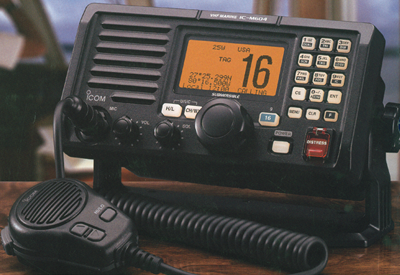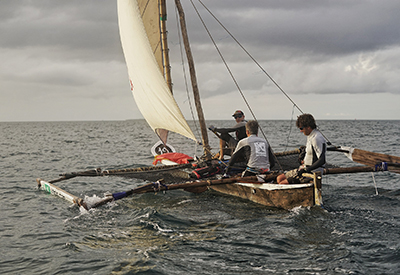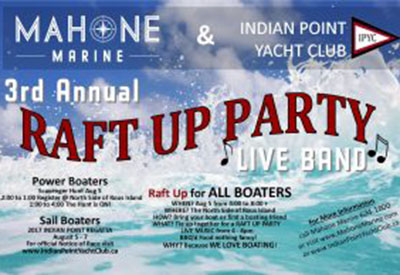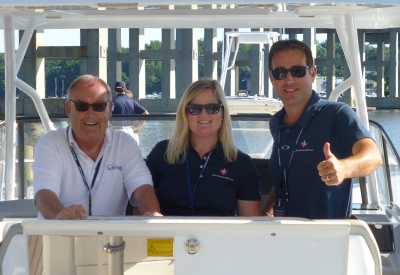March 22 2016
Your VHF/DSC (Very High Frequency/Digital Selective Calling) radio ranks perhaps only second to your and your passengers’ life jackets. If you have a maritime radio on board, anyone on board using it must have a Restricted Operator’s Certificate (Maritime) (ROC[M]). CPS-ECP offers the Maritime Radio Course in class or through self-study. The complete package with CD will prepare you for the ROC(M) with DSC Endorsement exam. (Exam must be done in person.) Here are some tips on how use your VHF safely, expediently and knowledgeably.
First Steps:
1 If you are purchasing a second-hand vessel with a VHF/DSC radio, according to document CPC-2-3-07 section 4.3, the MMSI (Maritime Mobile Service Identity) the new owner must contact Spectrum Management and Telecommunications Canada to update the owner name and contact info. If an MMSI-equipped radio changes boats, then the MMSI in the radio must be changed to reflect the description of the new boat and the contact information for the owner if it also changes.
2 Before heading out on the water, take time to input the MMSIs into your radio directory of those with whom you’re likely to have contact.
3 If you are a member of a yacht club, Power and Sail Squadron or any other group, chances are that they will have what is known as a Group MMSI. Group MMSIs enable you to alert all other members of the same group. This is very useful for cruises and other on-the-water functions.
4 Be sure to encourage your Squadron or District membership officer to include MMSIs in member directories.
Using your VHF/DSC:
1 First and foremost, if you find yourself in a situation that you feel is life-threatening, simply press the red distress button on your radio for the requisite time (typically 5 seconds). A distress call is transmitted to the RCC (Rescue Coordination Centre) and your radio continues transmitting until acknowledged by the RCC, at which time all DSC radios in the area will be switched to Channel 16 until further notice. Provided your radio is GPS-equipped, or connected to a GPS receiver, the RCC will immediately have all the information related to your MMSI and, most importantly, will know your position. After sending the DSC Distress Alert, you must make a normal voice distress call on Channel 16.
2 For routine calls to other vessels with VHF/DSC, avoid using Channel 16 to the extent possible. Call your friends using their MMSIs through the digital Channel 70. If you’ve programmed your friends’ MMSIs into your radio, all you need to do is click on their MMSI plus a working channel (e.g. Channel 9) at which point they’ll hear a loud tone and answer your call. Alternatively, input their MMSI manually (nine digits) to achieve the same results.
3 If you’re boating as part of a group and wish to locate others in your group, call your group’s MMSI and all members of that group will receive the call. You will then be able to communicate with each other on your chosen working channel. Don’t forget that the group MMSI for CPS-ECP is 031 600 018. Make sure you have that number also programmed into your own radio.
4 You will still be able to use other channels to monitor weather conditions, make ship-to-shore and ship-to-ship calls on the assigned frequencies, but by using your DSC you will make a major contribution to making Channel 16 available for the purpose for which it was intended – distress calling from vessels not equipped with DSC. Bear in mind that this channel is still available for distress calls, but if you are in a truly distressed situation, the simplest and most expedient way to alert the authorities that you’re in serious trouble is to push that red button! That frees you up to tend to your passengers and yourself and possibly save lives.
The MMSI System
1 MMSIs are used world-wide and the are coordinated by the International Telecommunications Union in Geneva, Switzerland.
2 All MMSIs consist of nine digits. The first three digits denote a geographical area and in the USA the prefixes 3XX have been assigned where X is any digit from 1 to 9. All Canadian MMSIs start with 316.
3 Group MMSIs start with “0”, immediately followed by the three-digit geographical code, plus five more digits.
P/C/C Tony Gardiner, SN





























